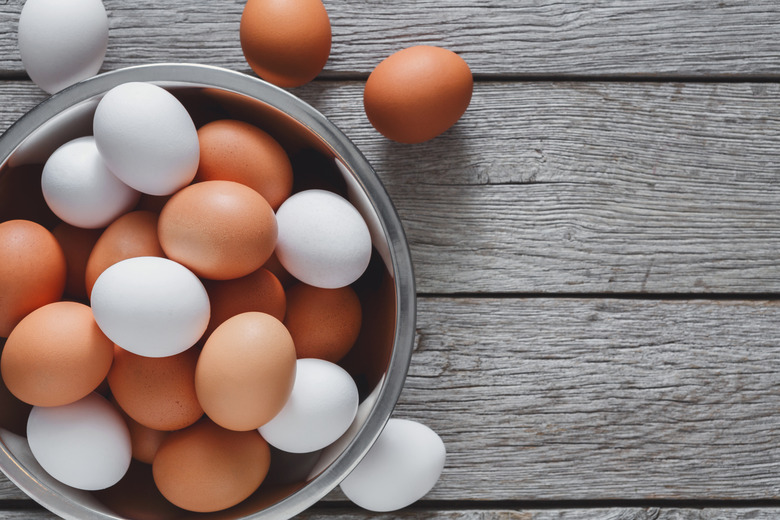Successful Egg Drop Contraptions For A Science Project
The egg drop project is a classic challenge in the engineering sciences: how to drop an egg from a height without it breaking. Solutions have included packing materials, parachutes, soft landing zones and even something known as an "oobleck" cushion. There are several tried-and-true methods for protecting your fragile content from the impact of a fall, but perhaps you'll come up with a new approach that will be even more successful.
Cereal Bag
A box of cereal and some plastic bags are all you really need to make a successful egg drop contraption. Light, crispy cereal, such as crispy rice cereal, works particularly well because it crushes easily. Fill four or five sandwich bags with cereal and place these around the egg inside a larger plastic bag, ensuring the egg is cushioned on all sides. This should work well for a standard two-story drop, but use larger bags and more cereal as the height of the drop increases. When the bag hits the ground, the impact of the landing is absorbed and distributed throughout the cereal. You'll probably end up with a bag of crushed cereal, but the egg should be unbroken.
Egg Parachute
People are able to jump from planes with parachutes and land on the ground safely because the parachute creates air resistance, which works against the force of gravity to slow the rate of the fall. The same principle can be applied to create successful egg drop contraptions. Place the egg in a lightweight box with a lid and tie the parachute to the box with some thread. You can also try using a plastic grocery bag for the parachute and adding padding to the box. Remember that the larger and heavier the container, the larger the parachute will need to be to protect the egg. This may not work so well with egg drops of only a few feet, because the parachute needs time to open and generate air resistance.
Oobleck Cushion
"Oobleck" is a nickname given to a mixture of corn starch and water that forms a non-Newtonian fluid, i.e., a fluid whose flow does not have a constant value of viscosity. When it is at rest or when you apply gentle pressure to the fluid, it acts as a liquid, but it quickly becomes a solid when under more pressure. To make the contraption, combine two parts corn starch with one part water to fill a quart-size plastic bag. Then simply stick the egg inside the bag and let it fall to the ground. When the bag hits the ground, the oobleck forms a solid around the egg so that the force of the fall is evenly distributed around the shell's surface.
Padded Box
A simple padded box may likely be the most common successful egg drop contraption. The box you use should crush on impact, so use a material like cardboard instead of plastic or metal. You can line a box with any cushion or soft material, such as foam, sponges, bubble paper, cotton or marshmallows. Egg crate foam works particularly well, because its shape is perfect for holding the egg in place. Ensure that you have enough padding in the box to cover the egg evenly on all sides. When the box hits the ground, the force will cause the box to crush, which absorbs much of the shock of the fall. The force is also evenly distributed throughout and absorbed by the cushioning material.
Cite This Article
MLA
Allonsy, Amelia. "Successful Egg Drop Contraptions For A Science Project" sciencing.com, https://www.sciencing.com/successful-drop-contraptions-science-project-8423692/. 23 April 2018.
APA
Allonsy, Amelia. (2018, April 23). Successful Egg Drop Contraptions For A Science Project. sciencing.com. Retrieved from https://www.sciencing.com/successful-drop-contraptions-science-project-8423692/
Chicago
Allonsy, Amelia. Successful Egg Drop Contraptions For A Science Project last modified August 30, 2022. https://www.sciencing.com/successful-drop-contraptions-science-project-8423692/
